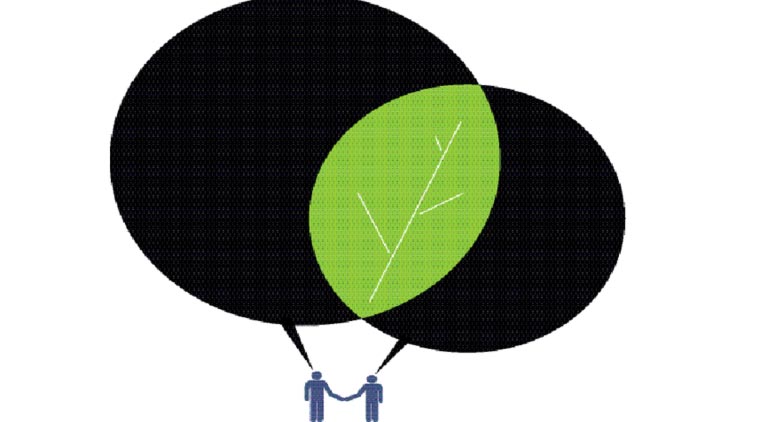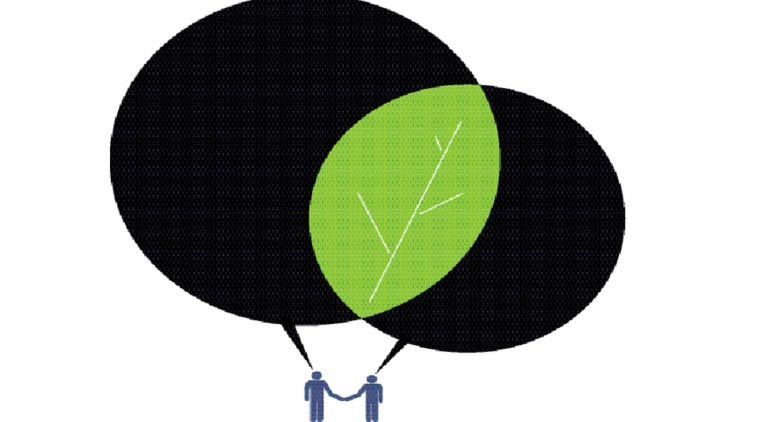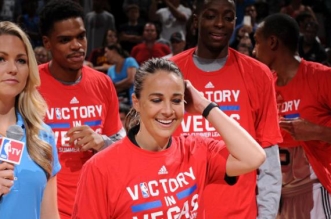
 Beyond the deal itself, the process in Paris was riveting. Among the many plot twists, the villains at the start of the saga ended up looking not-too-bad, while the heroes ended up just a little short of heroic. (Illustration by: C R Sasikumar)
Beyond the deal itself, the process in Paris was riveting. Among the many plot twists, the villains at the start of the saga ended up looking not-too-bad, while the heroes ended up just a little short of heroic. (Illustration by: C R Sasikumar)
The Paris conference on climate change was quite the cliffhanger. Even till the last minute, we were left wondering: Will Paris be another Copenhagen, where, famously, the deal had unravelled? Officials worked late into the wee hours, well past the official deadline, to cobble together a document on which 196 nations could put their signatures. Leaders who had staked their reputations on getting a deal done, from US President Barack Obama to French President Francois Hollande, hailed a planetary social contract of historic proportions. Even India, a petulant participant at the start, declared that “climate justice” had been done.
Objectively, the Paris deal, for all its merits, has issues. It is vague in many key areas — emissions targets, monetary commitments, penalties and mechanisms for verification, to name a few. Despite best intentions, it is hard to see it achieving the crucial goal of limiting global warming to a maximum of 2 degrees Celsius. Also, did I mention that much of the “commitment” in the deal is not really binding? US Secretary of State John Kerry made sure that the legally binding term “shall” was replaced with the weaker term “should” before the US signed.
But I digress. For now, enough of the “bah, humbug!” talk, let’s celebrate the fact that a deal was struck. Beyond the deal itself, the process in Paris was riveting. Among the many plot twists, the villains at the start of the saga ended up looking not-too-bad, while the heroes ended up just a little short of heroic. India was, without question, in the villain category when the talks began. As the world’s fourth-largest emitter of carbon dioxide, much was riding on its commitment, but India was arguing that converting to cleaner energy sources would risk its development ambitions. India was also arguing that it was owed a break on cutting emissions given its very low per capita carbon dioxide emissions levels. In the meantime, the world’s number one and number two emitters, China and the US, had arrived in Paris with a pact in hand to rein in their spiralling emissions. They were clearly the good guys.
By the time the talks concluded, India was deemed to be critical yet constructive, particularly in getting through language such as a commitment by the developed world to subsidise the developing world by more than $100 billion a year. China, on the other hand, became obstructive as the talks unfolded. It was accused of being particularly unhelpful — watering down reporting requirements on emissions, resisting timely updates on pledges to cut emissions and demanding that it be granted the privileges of a developing country in the deal. The US, the other good guy, must now brace for stiff Republican resistance to any deal struck by Obama during a no-holds-barred presidential election cycle, not to mention the fact that it still leads the 20 major countries surveyed by the research firm, Ipsos Mori, in the proportion of its population that denies climate change.
The drama of the Paris process was matched by the dramatic irony of visual reminders of what was at stake with simultaneous images of floods in Chennai and a “red alert” in Beijing. But, at least, Paris was no Copenhagen. Let us now hope it is no Rio, where commitments made in 1992 were abandoned in due course. Let’s also hope that the unintended consequences of implementing the 1997 Kyoto Protocol are not repeated: The EU Emissions Trading Scheme was racked by price volatility and fraud. For now, we should ring out 2015 by celebrating the deal, and India’s pivotal role in it.
Beyond the agreement at the governmental level, Paris ought to be celebrated for another, more modest deal — it is one that may surprise us with its power to make an even bigger difference in the long run. Interestingly, India, the arch “villain” of Paris, was pivotal in making this one happen as well.
I am referring to a deal struck by Microsoft founder, Bill Gates, with a group of about 30 business leaders, including Mukesh Ambani and Ratan Tata. The purpose of this group was to hedge the risk of relying on government subsidies. Gates and company announced the Breakthrough Energy Coalition in Paris, along with a fund to provide seed, angel and series A investments to early-stage green technology innovations. The coalition will also coordinate with 20 governments that focus state R&D investments on scalable, locally implementable and transformational clean-tech innovations. This, to my mind, is a development that ought not to be underplayed. Despite the lofty commitments from world leaders, I am much more comforted by the potential of timely investments in innovation-led responses to climate change.
How did Gates pull this off? Reportedly, Obama recruited him to convince Prime Minister Narendra Modi to agree to a deal in Paris. The Modi-Gates dialogue started with toilets. After all, as Gates had written in 2014, “Creating good sanitation options for people — a safe place to poop — is a big focus of our foundation.” From toilet change, talk turned to climate change. Gates’s re-assurance there would be significant private sector commitment to helping developing countries find cheap and innovative alternatives to coal helped bring Modi around. And the rest is history.
Paris is a lesson in the art of the deal at so many levels. It was unprecedented in its scope — 196 nations with different sources of leverage and different interests. It was unusual in its balancing of history (the industrialised world got to this point without restrictions on emissions) and the future (fossil fuels will remain crucial to bringing power to the millions in the developing world). It was a crossing of tribal boundaries: A deal among 30 leaders in the private sector was so critical for forging a deal among 196 governments. It was a miracle the Paris conference even took place, given the terror that unfolded across the city just weeks before. Who knows what the climate forecast is for 2016 and beyond? For the moment let’s celebrate. Next year is when the hard-won deal will to turn to hard decisions.
But, till then, we’ll always have Paris.
![]()
Source: New feed






